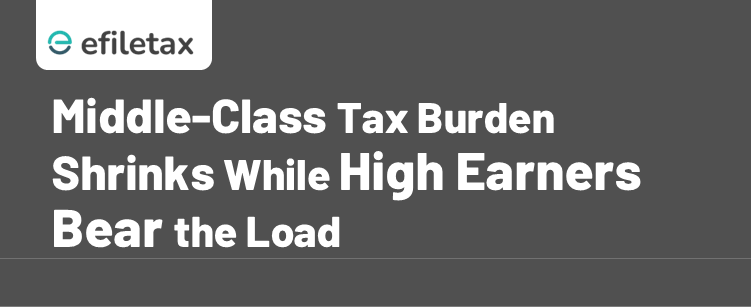Navigating the New Tax Landscape : A Middle Class Perspective

In the last decade, India’s tax policy under the government has undergone significant changes, ostensibly aimed at easing the financial burden on the middle class while tightening the net around high-income earners. Here’s a closer look at how these policies are affecting everyday Indians, from salaried employees to small business owners. Tax Burden Shifts to High Earners
The Middle Class: Caught Between Relief and Reality
- Tax Exemptions and Relief: The government has increased the tax exemption limit to ₹7 lakh under the new tax regime, simplifying tax filing by removing many deductions and exemptions. This change was intended to put more money back into the pockets of the middle class, providing much-needed relief for salaried individuals and small business owners.
- Real Impact: Despite these exemptions, the middle class faces a paradoxical situation. While their tax liability might be lower on paper, the cost of living has risen sharply. Inflation in essential goods and services has outpaced income growth for many, which means that any tax savings are often absorbed by higher day-to-day expenses. So, while the tax cut looks good on paper, the increase in disposable income is frequently offset by the escalating cost of living.
High Earners: A Closer Look at Increased Taxation
- Steeper Tax for the Wealthy: The government’s tax strategy has shifted, with a significant portion of income tax revenue now coming from individuals earning over ₹50 lakh annually. This progressive taxation model aims to redistribute the tax burden more equitably, with 76% of income tax collection sourced from high-income earners.
- Impact on Investment and Savings: For high earners, changes like the increase in capital gains tax and the removal of indexation benefits for property transactions affect long-term wealth-building strategies. These policies might encourage shorter-term investments over long-term commitments, potentially impacting sectors like real estate, which traditionally attract long-term investment.
The Unintended Consequences
- Consumption vs. Savings: The government’s intention behind reducing middle-class taxes may have been to spur consumption, stimulating economic growth. However, with rising costs of essentials, many middle-class households are choosing to save rather than spend, which counters the policy’s goal of increased consumption and economic activity.
- Tax Compliance and Evasion: Although the tax base has expanded, emphasizing higher taxes for high earners could unintentionally encourage tax evasion or wealth transfer offshore if high earners feel that tax rates are excessive. This presents a challenge to maintaining compliance while pursuing a progressive tax approach.
People’s Side: Voices from the Ground
- Salaried Employees: There’s a mixed response among salaried employees. While they appreciate the lower tax rates, there’s frustration over the lack of a corresponding rise in income and benefits, especially given the increasing cost of living. For many, the tax savings are a silver lining, but it’s dimmed by economic pressures.
- Small Business Owners: Small business owners face unique challenges. Although GST has streamlined the tax system, its complexities and compliance costs can disproportionately impact smaller enterprises. Unlike larger corporations with extensive resources, smaller businesses may struggle to navigate these requirements efficiently, resulting in added operational stress.
- Investors: Changes in capital gains tax have significantly impacted individuals investing in real estate and the stock market, leading them to reassess their strategies. The long-term implications could mean a shift away from traditional investment avenues, which could have broader economic effects if large numbers of investors start seeking alternative investment paths.

The Modi government’s tax policies aim to provide relief to the middle class and make the tax structure more progressive. However, the real-world impact reveals a more nuanced reality. On one hand, middle-class taxpayers benefit from increased exemptions and simplified tax filings; on the other, inflation, rising costs, and job market challenges often erode these gains. For high earners, the policy shift translates into a higher tax burden, influencing investment choices and potentially limiting growth in certain sectors.
This blog sheds light on these changes not purely from a policy perspective but from the standpoint of individuals and businesses who experience these policies daily. The narrative isn’t simply black or white but rather filled with shades where government intentions intersect with the complex realities of everyday life in India.